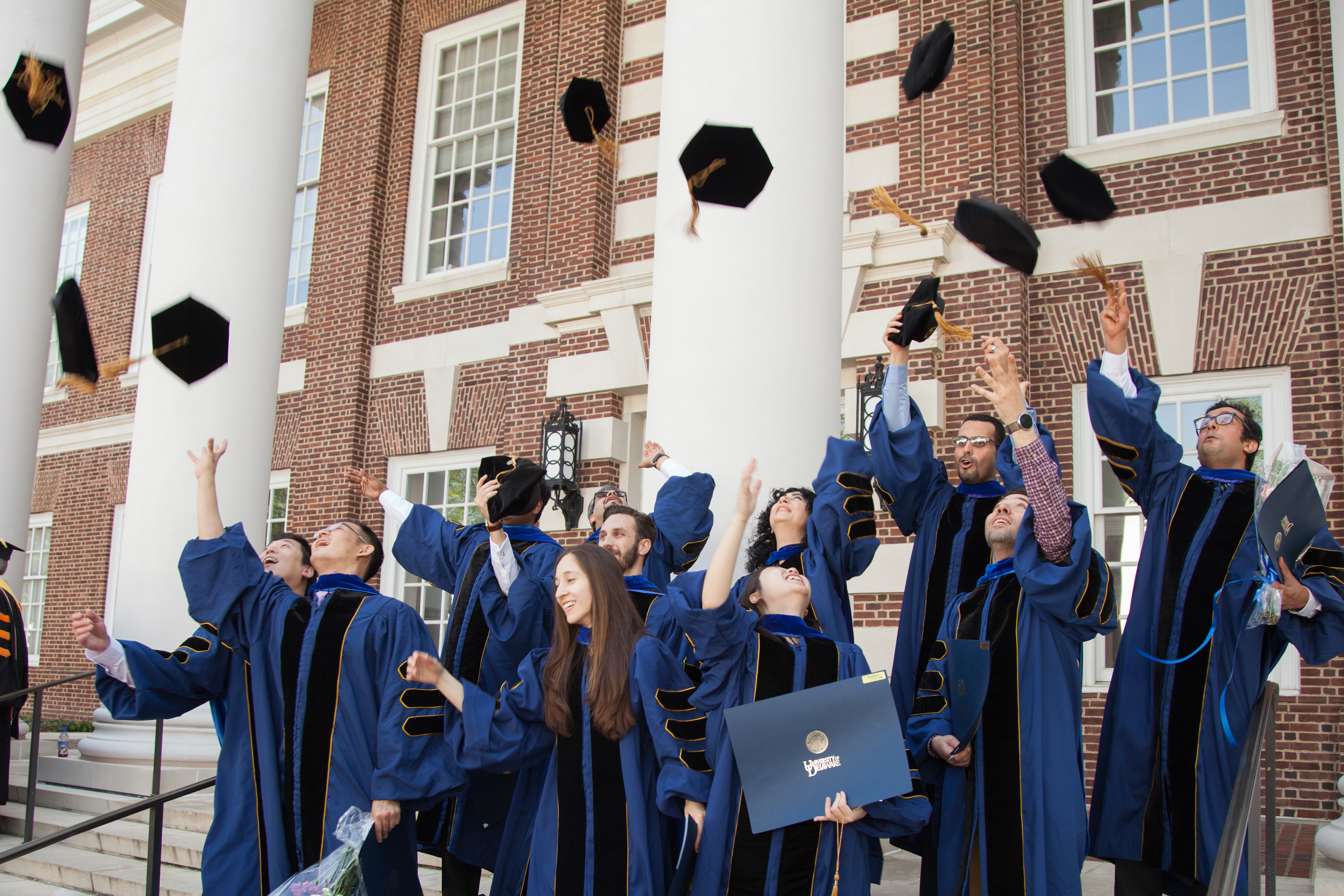Blackbirds, fly
Colossal flocks of blackbirds are a common wintertime phenomenon in Delaware
9:02 a.m., Dec. 7, 2011--If your holiday shopping takes you to Christiana Mall, time your drive for a half hour before sunset. That’s when you’re most likely to see a massive flock of black birds winging its way to Churchmans Marsh.
This flock of several million birds forms a solid black carpet in the sky; if it was earlier in the day, when the sun is higher, the flock would blot it from view. The mixed flock consists of true blackbirds (red-winged, specifically) but also common grackles, brown-headed cowbirds and starlings.
Campus Stories
From graduates, faculty
Doctoral hooding
“It’s an amazing spectacle,” says Derek Stoner, past president of the Delmarva Ornithological Society. “The sky is filled with birds returning to roost in the marsh after a day of feeding. You get the very best views of this super flock around the intersection of Route 7 and Churchmans Road -- as long as you time it right.”
A flock of blackbirds so colossal that they block the sun sounds like something straight out of Hitchcock’s thriller, The Birds, but it’s a common wintertime phenomenon in Delaware.
“The unique combination of Delaware’s marshes and the surrounding agricultural lands are what make the state an attractive winter residence for millions of blackbirds,” says Chris Williams, a University of Delaware associate professor of wildlife ecology. “You’ll also see this winter flock phenomenon in New Jersey, coastal Virginia and North Carolina, and other coastal regions in the South.”
The Churchmans flock is one of about a dozen winter flocks in Delaware, according to Williams. Each morning the flock splits up and disperses in search of food, including such things as corn stubble or seedy grass. Depending on food availability, the Churchmans flock may travel to Chester County, Pa., or as far as Lancaster before returning to its nightly roost in the marsh.
Blackbirds only form super flocks in winter, says Williams. By March, the flocks will disperse to set up nests and begin breeding. Some of the birds in the super flocks are year-long Delaware residents; others migrate here from Canada and other northern latitudes.
As to why a bird would decide to hang out with millions of other birds each winter, scientists have several theories, says Williams. One possible reason is that a flock provides better protection from predators. Each bird in a massive-size flock doesn’t have to be quite as vigilant as it would be if it was flying solo.
A large flock also creates the conditions for “predator confusion.” For the same reason that fish swim in schools, birds fly in flocks. It can be difficult for a predator to pick out individual prey in large groups. “All the birds massed together create sensory overload for the predator,” notes Williams.
In addition, the dilution effect occurs when there is a large flock. Simply put, this means that the mathematical odds that a bird will get eaten are smaller when the flock is larger.
A large flock also promotes greater feeding efficiency because the birds share information about food sources. “Blackbirds are known to be great communicators,” says Williams.
Although Williams is awed by the Churchmans flock as it wings its way over his Newark neighborhood, heading out for food, he dreads the inevitable February day when 20 or 30 birds will drop down from the flock and take up residency in his backyard.
“I keep feeders up all winter long and enjoy seeing a variety of birds at the feeders,” says Williams. “But all of sudden, in February, a small group of blackbirds will break off from the large flock overhead, descend on my feeders and eat all the seed in minutes.”
“Even if I take the feeders down, the birds stick around,” adds Williams. “Blackbirds in the backyard are a sure sign it’s mid-winter.”
Article by Margo McDonough








